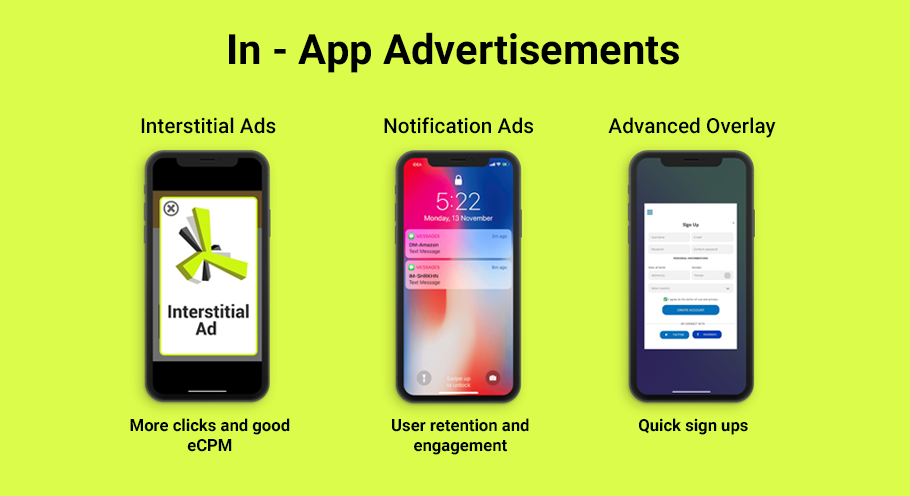Mobile in-app advertising has taken the advertising world by storm. It has grown rapidly in the digital sphere, generating lucrative revenues for both advertising companies and brands. In fact, surveys have put in-app advertising to be the fastest evolving mobile advertising form in the global market. In such a scenario, the experts have been minutely studying the trend of in-app advertising. They have highlighted the crucial reasons for investing in in-app advertising and its benefits.
Mobile phone users spend more time browsing through apps
While a few years ago, Facebook and Twitter were the most popular mobile applications, the reality is a tad bit different now. More social media apps have joined the marketplace, along with apps from various genres. Be it food-delivery apps or learning platforms; the marketplace dons a completely new look.
As a result of the rise in mobile applications, mobile browsers have slowly shied away from prominence. Moreover, mobile users mostly use apps for their needs. Therefore, app developers have started to churn out all kinds of apps in the market. People are not so big on using mobile browsers anymore. This global and national affinity towards apps has changed the ad spending model in the industry.
In-app advertising ensures better and more specific demographics targeting.
Ads shown through apps can be customized based on users. In addition to customization, the ads displayed are following the app’s context and subject. Therefore, the ad viewing experience appears more natural rather than forcing it on the audiences. So, in-app advertising offers a better ad experience than the ads featured in mobile browsers, which appear to be interruptive.
FAQ’s for enhancing knowledge on mobile “In-App Advertising” –
Usually for the average banner ad format, a CPM of INR 60 – INR 100 is sufficient. Whereas average CPM for Interstitial ad format may start from INR 250. Also for Video ad formats CPM of INR 200 can be considered sufficient.
Interstitial digital advertising includes digital ads that are interactive and full-screen ads that may cover the partial/full interface of the host app or website. Usually, this kind of ad appears between content, so that they get placed at natural breaks or transition points like in between various activities/game levels in gaming apps.
Normally, Google charges 30% of the entire revenue made on a particular Android app and passes on the rest 70% to the mobile app developers.
In-app mobile ad rates may vary largely depending on different parameters including ad types, placement where the ad is run, existing revenue-sharing agreement in place, target audience, campaign goals, and revenue model, or sometimes just brand recall, etc. Various costing models include – CPM, which stands for Cost Per Mille, Cost per click (CPC) & CPA which stands for cost per action/cost per acquisition.
CPM / Cost Per Mille is the rate which the advertiser decides to pay per 1000 impressions of an ad campaign. Whereas, eCPM is the total earning of the publisher/1000 impressions. eCPM is a very useful parameter for publishers to optimize and evaluate their monetization model by monitoring advertisement revenue generated from the ad campaigns.
For mobile devices – 320*480 pixels (Most popular size) and 480*320 size interstitial ads perform quite well compared to other ad dimensions. However, for tablets – 1024*768 and 768*1024 size interstitial ads perform quite well.
More click-through rates (CTR)
In-app advertising has a greater click-through rate than web advertising. According to the company Medialets that researches mobile ad campaigns, the CTR for the mobile web is 0.23%, while for apps, it grows up to 0.58%. Another study revealed that in-app advertising fetches audiences 11.4 times better than web banner ads, thereby proving the superiority of in-app branding. Since greater CTR brings forth greater leads and conversions, companies prefer in-app advertising more than other forms of digital advertising.

